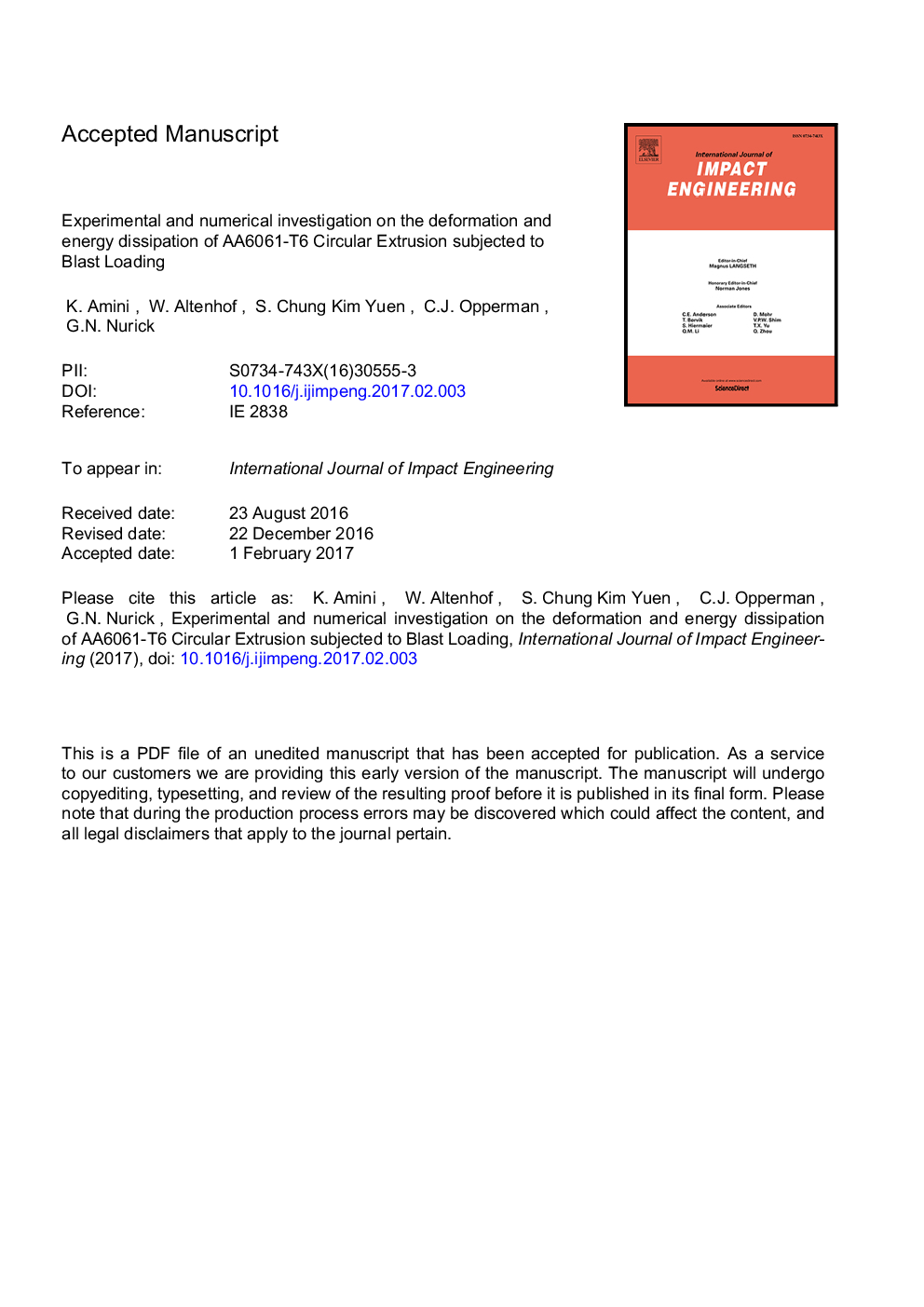| Article ID | Journal | Published Year | Pages | File Type |
|---|---|---|---|---|
| 7173087 | International Journal of Impact Engineering | 2017 | 48 Pages |
Abstract
The study detailed in this manuscript focuses on the numerical and experimental testing of circular AA6061-T6 aluminum alloy extrusions subjected to cutting deformation modes under blast loading conditions, as energy dissipation devices. The experimental investigation was completed utilizing a specially designed cutter with the presence of a deflector mounted on a ballistic pendulum. Plastic explosives (PE4) where charge masses varied from 20Â g to 40Â g were used to initiate blast loads. Experimental results revealed that the cutting deformation mode was repeatable and controllable having a stable and clean curling cut. Numerical simulations of the detonation as well as the axial cutting deformation process employing an Eulerian finite element formulation were performed. Numerical detonation models were in good agreement with experimental results having an average standard error less than 3% for impulse predictions. Good predictive capabilities of the numerical model for the axial cutting behaviour and large scale deformation response were observed. An almost constant force during cutting was observed, which eliminated the initial high peak crush force associated with a dynamic plastic collapse deformation mode. The average mean cutting force, measured at the load cell for both experimental and numerical testing methods as a result of cutting deformation was observed to be 33.5Â kN for the specific specimen geometry and material. Finally, a force analysis was conducted using theoretical and numerical models to study the steady-state cutting condition.
Keywords
Related Topics
Physical Sciences and Engineering
Engineering
Mechanical Engineering
Authors
K. Amini, W. Altenhof, S. Chung Kim Yuen, C.J. Opperman, G.N. Nurick,
